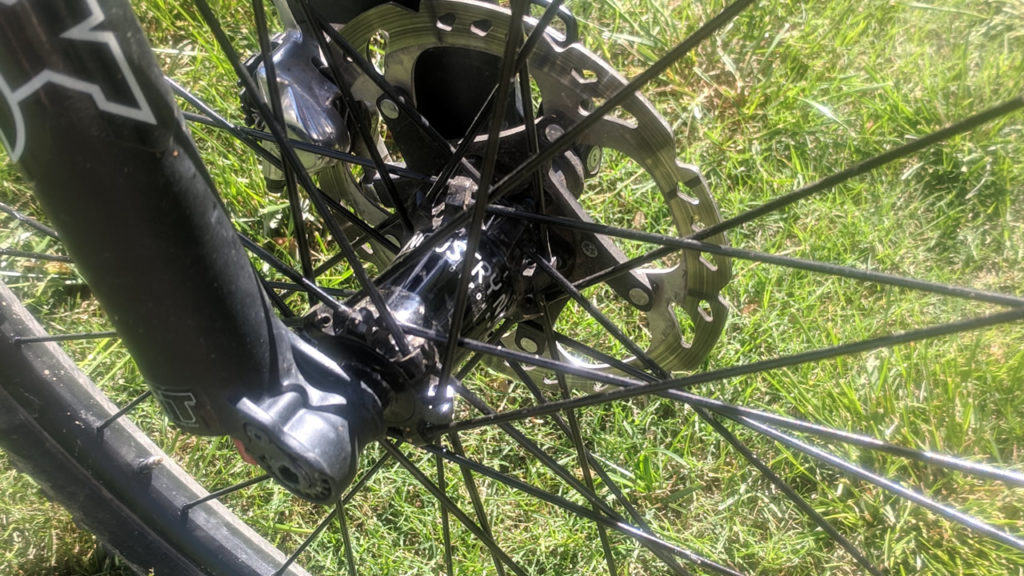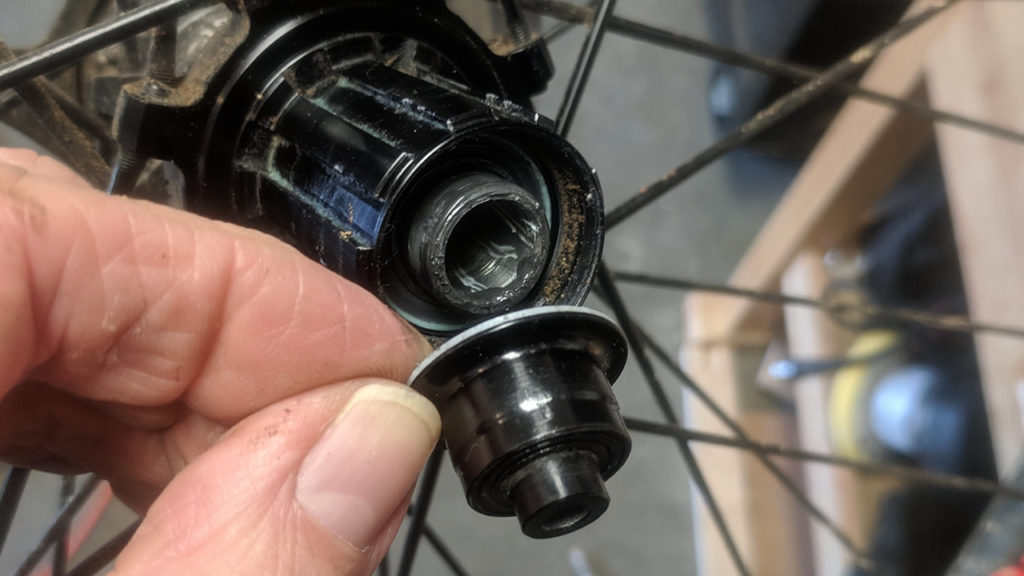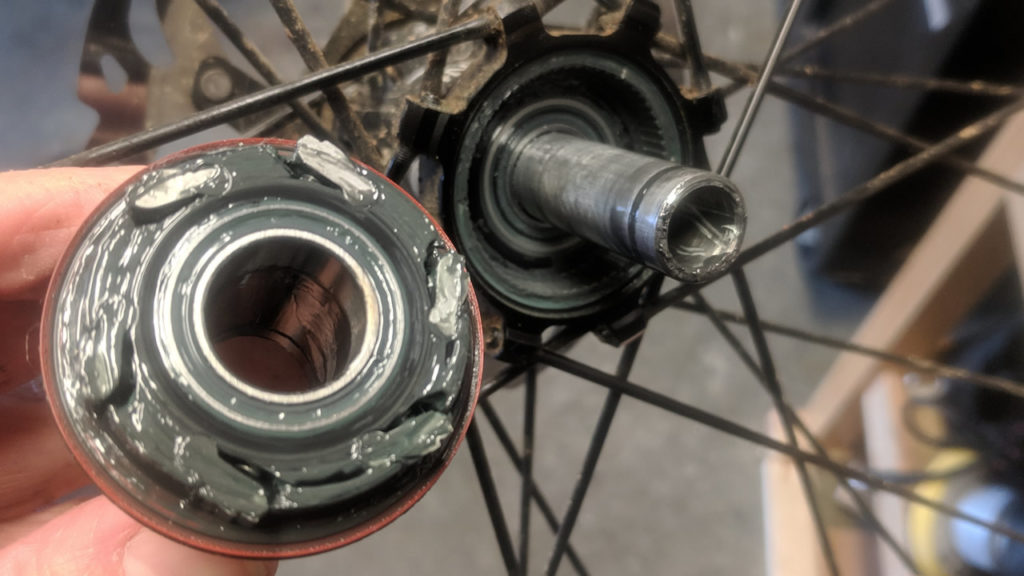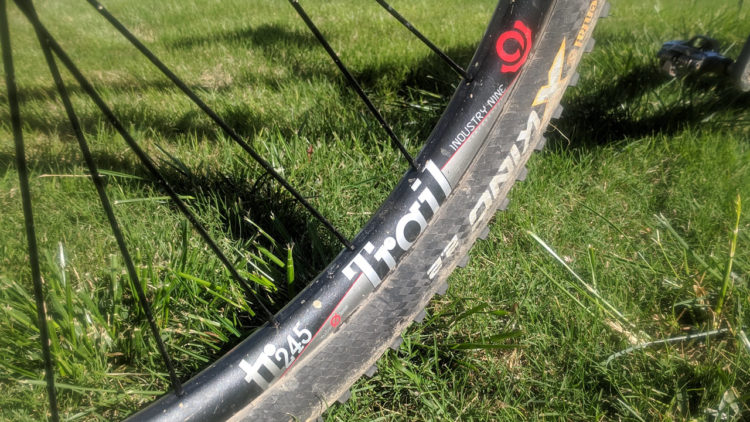Are you thinking about upgrading your MTB to Industry 9 wheels? I needed a new wheelset when I was one of the last serious mountain bikers on earth to retire my old 26er, and that’s what I picked. Here’s my Industry Nine Trail 245 review which includes some easy setup tips if you’re turned off by the noise they make when freewheeling.
Industry Nine Trail 245 review – The I9 hub sound
He did try to warn me. I can’t remember now exactly how he phrased it, but I distinctly remember the salesperson that I dealt with at the mail order place mentioning something about Industry Nine hub noise. I think he said, “They use a freewheel system with more pawls, so they’re going to sound a little different.”
A salesperson giving any kind of disclaimer about a product should have set off alarm bells, but I was more focused on getting a wheelset that was durable and would fit my bike. After all, there’s a big difference between “sounding different” and “Hey dude, these wheels are F-ing loud!!”
When they arrived, the sound difference between the Industry Nine hub and what I had been riding was apparent as soon as I got the wheels out of the box. Spinning the freehub by hand and hearing the loud clicks, I had an “Oh, this is what the salesman meant” moment, but I still didn’t think it was a big deal.

What is a high engagement hub?
Industry Nine explains how their high-engagement hubs work on the company website. Instead of the two or three ratcheting pawls that engage when you pedal forward (and ratchet when you coast), their hubs have six. With that many, Industry Nine brags you get much faster engagement when you pedal forward (3 degrees).
It wasn’t until my first ride on singletrack that I fully understood what I’d bought. As others have described, the wheels sound like a large and angry swarm of bees as soon as you start freewheeling. I’m not exaggerating – a VERY large and VERY angry swarm of bees. At first, it’s funny. You think to yourself that when you come up behind another rider, you’re going to sound intimidating as hell. You will probably even giggle a bit.
The next phase is you start to realize just how much you freewheel trail riding. Unlike road riding, where you’re spinning and keeping the drivetrain engaged 99 percent of the time, you freewheel a lot while mountain biking – especially on the often-short ups and downs of singletrack.
So, it makes a certain sense that as you’re freewheeling and engaging so much that a high-engagement design would be superior. However, I don’t know about you, but I’ve never really noticed any problem with a lag before any freewheel of mine engaged, but there it is. I guess I’m just a slow fatty with pathetic muscle snap. Anyway (and I fully admit this could just be an “Ian issue”) I find after about 30 minutes of the angry bees it starts to bore into my skull, and I become super irritated by it. It never fails, I go from thinking it’s ridiculously loud – yet funny – to full-on pissed off every time. The way sound is reflected back at you in the woods in a way that it’s not out on the open road just exacerbates the issue.
Industry Nine hub sound solution
Here’s the good news. There is somewhat of a fix. These are super-easy hubs to pull apart. Grab the drive side end cap with a large pair of pliers (pad them to prevent scratching), and you can wiggle it right off. Next, you slide the freehub body off the axle. Then, it’s just a matter of filling it with grease and putting it back together again. Once you understand how it’s done, you can do it in 10 minutes.


Click here for an excellent before and after greasing demonstration on YouTube
Filling the freehub body with grease immediately makes the wheels almost totally silent – quieter even than a standard Shimano hub. It’s important to note that grease – especially heavy grease – can retard the pawls from springing back and you may lose some of the famous I9 engagement, but it hasn’t been a problem for me.
One thing, greasing the freehub is not a permanent fix. Over time, the grease loses its effect, and the noise level steadily grows until you have to repeat the process.
Industry Nine Trail 245 review – What I do like
Okay, enough of my “War and Peace” on the hub noise, because these wheels do have some impressive qualities.
I’m not a light rider, and I’ve let my weight get up over 200lbs, but the Industry Nine Trail 245 32-spoke option still has a very stiff feel. Keep in mind that I’m a middle-aged cross-country biker who’s not hitting big jumps and drop-offs. However, I do ride a hardtail, so these wheels don’t have a completely easy life. The oversize aluminum spokes contribute to the stiffness, and I’ve not had any issues with spoke breakage on spoke noise.
I’m running Continental X-King 2.2 tubeless tires, and I do have to use a high-pressure hose hooked to my compressor to get them to seat when I’m rotating the tires or topping up the sealant. I never know whether to blame that on the rims, the tires, or just certain rim/tire combinations, so I’m not going to deduct points for that.
While I run carbon rims on my road/gravel bike, I still prefer the durability of the Industry Nine Trail 245 aluminum rims. There are plenty of rock gardens where I ride in North Carolina and going aluminum just seems like a more intelligent choice – especially for a larger rider like myself.
Industry Nine Trail 245 review – Conclusions
Industry Nine has discontinued the Trail 245, but the wheelset is still available from some online sellers. Despite my gripes about the hub noise, I-9 has an excellent reputation, and I constantly see cycling industry news stories where they’ve reached deals with wheel and rim makers to provide them hubs. That means my issues are likely just mine because the MTB community clearly likes the overall product quality and faster engagement. The wheels do seem bombproof. After more than a year of riding, they’re still perfectly straight and true.







